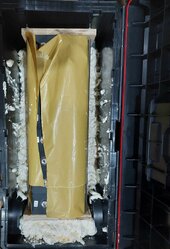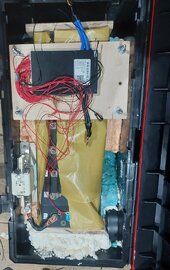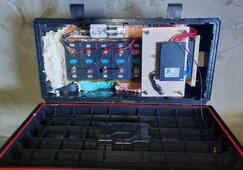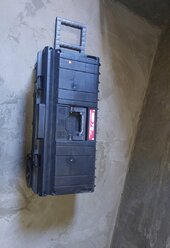What do you think about putting some polyurethane building foam around your battery pack if you're using a toolbox for a case and you want to immobilise the pack?
(pictured)


I also have compression with threaded rods (spring loaded) and I've used this yellow foil (two layers) so I can pull cells out if needed.
This case can be used vertically this is why there is foam all the way in the bottom.
Sides are filled up by about 2in to prevent sideways motion. There is no foam up top to allow adjustment of the pressure.
What do you think? The battery will be stored underground (in a cellar) with a constant outside temperature of around 2~5C.
(pictured)


I also have compression with threaded rods (spring loaded) and I've used this yellow foil (two layers) so I can pull cells out if needed.
This case can be used vertically this is why there is foam all the way in the bottom.
Sides are filled up by about 2in to prevent sideways motion. There is no foam up top to allow adjustment of the pressure.
What do you think? The battery will be stored underground (in a cellar) with a constant outside temperature of around 2~5C.






